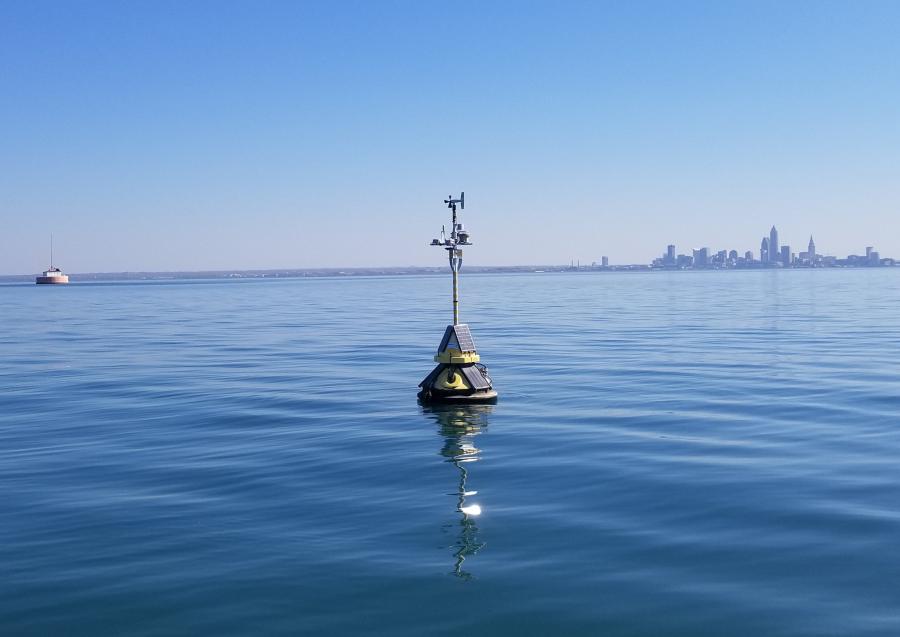Two New Buoys Provided Expanded Water Quality Monitoring

Cleveland Water now has two more smart buoys monitoring Lake Erie, expanding our capacity to track and quickly respond to water conditions that can affect drinking water quality.
The two new buoys were launched by LimnoTech on June 30, with one positioned near the water intake for the Crown Water Treatment Plant on the westside and the other near the water intake for the Nottingham Water Treatment Plant on the eastside.
They join the original two which were launched on May 20, one of which is positioned between the water intakes for our Morgan and Baldwin Water Treatment Plants and the other farther off-shore.
Each buoy is like a floating laboratory, collecting data on lake conditions around the clock and sending it to an online monitoring system where it can be viewed by Cleveland Water staff and the public.
Staff can track parameters such as water temperature, pH, turbidity, and dissolved oxygen in real-time enabling them to anticipate and respond to changes in lake water quality hours in advance of the water being drawn into a treatment plant.
With the addition of the two new buoys, we can now monitor raw water quality entering each of our four water treatment plants. Each plant has its own water intake out in Lake Erie. These are spread out over 15 miles and pull water from various depths. This means that water entering one plant may not be the same quality as water entering another.
Having a buoy near each intake gives us the ability to monitor each plant individually and make targeted treatment adjustments. Being able to receive advance notice of potential water quality issues as well as respond on a plant-by-plant basis is a critically important advantage in ensuring our customers receive the best quality drinking water. It also saves time and money.
Being able to monitor each intake is particularly important during a hypoxia event. During the summer months, we can experience hypoxic water which has low levels of oxygen and is often referred to as the “dead zone.”
While low oxygen in the water does not singularly impact water treatment, when water has little or no dissolved oxygen, other minerals that are naturally found in lakebed sediment, such as iron and manganese, can dissolve into the water. These elements, if not properly removed during the water treatment process, can cause discolored water or even unpleasant taste and odor issues.
All four buoys are also being used in partnership with Cleveland Water Alliance and the Great Lakes Observing System and their Smart Great Lakes initiative.
